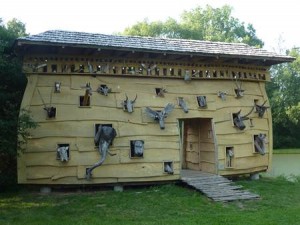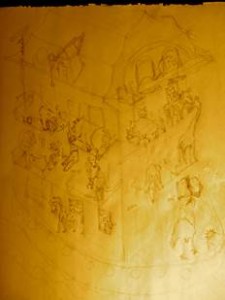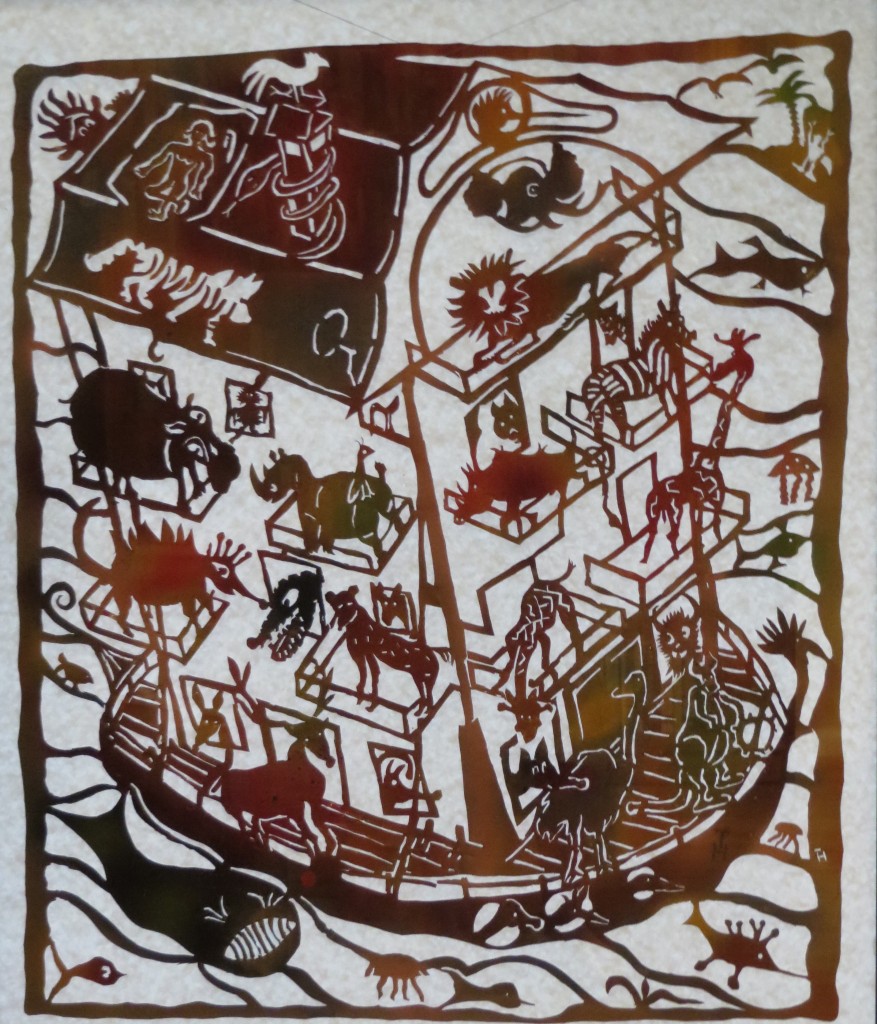Ápres le Deluge, Nous (Scene #15)
T. Hueckel, “Ápres le Deluge, Nous” – May 2015, 20×24 in (50×60 cm)
Aha !!! This piece won Public Choice award at Resolutions 2017, 3rd Annual Juried Show in Hillsborough Art Gallery, Hillsborough, NC
The subject of Noah’s Arc has been on my mind since sometime. It is clearly an ideal subject for someone whose main subjects are animals. It was a favorite subject for centuries. The obligatory references are the most classical:
and
“Noah, The Entry of the Animals”, Jan Brueghel the Elder, 1613
It’s a pitty it’s not Pieter Brueghel, the younger, whom I certainly prefer over his brother.
Nineteen century American painters loved the subject.
Edward Hicks’, 1846 painting is my preferred by far.
followed by a Flemish Simone de Mijle (1570).
Most commonly, the narrative of these paintings refers to animal entry to the Ark or exit from it, or the Ark sitting on the top of Mount Ararat. My preferred would be Ark at the sea after the rain stopped and at the moment when the pigeons are coming back, and everybody gets out on the balconies.
such as Noah and His Ark (after Charles Catton) by Charles Willson Peale, 1819,
or an early (1100) French fresco at Abbey Church, Saint-Savin-sur-Gartempe. From this one I took an idea of using a Viking boat with a birdie head crowning the prow.
Most directly, I was inspired by a wonderful Noah’s Ark built by a contemporary Polish sculptor and painter Józef Wilkoń. My cousin Jarek Kilian took me to Radziejowice (Poland), south – west of Warsaw, where he was staging an opera, but where at that time you could see the Arka exposed in the park of a local palace. I loved it. I could not leave the place. The way how Wilkoń shows the animals’ soul is incredible. I was amazed, but at the same time I was deeply moved.
Józef Wilkoń, Arka, 2006.
I let myself be photographed in front of it with a zebra, an elephant and a bear, and a few others. I loved the whole concept.
Józef Wilkoń, Arka, 2006 (detail).
My Ark follows the tradition of using contemporary architecture and fashion in paintings. So, as I love Swiss early 20th century architectural style, I placed my animals in a house of that period that I saw in a little village of Saint Sulpice near Lausanne, Switzerland. The drawing for the original design of the cut-out looks a bit different for the final one, probably better, but that’s my usual trouble.













Leave a Reply